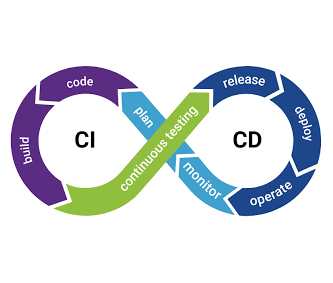|
Page 1 of 2 If you haven't yet adopted CI/CD practices, the best advice is to choose tools that are easy to use, scalable, and compatible with your existing workflows and tools. We compare the features of seven popular options.

What Are CI/CD Tools?
CI/CD tools, short for Continuous Integration and Continuous Deployment tools, are a set of software applications and solutions that facilitate automated integration, testing, and deployment of software applications throughout the development lifecycle. These tools help to ensure that changes made to the codebase are integrated, tested, and deployed consistently, enabling rapid software development and reducing the risk of errors.
Continuous Integration (CI) involves merging code changes from multiple developers into a shared repository, typically several times a day. CI tools automate the process of building, testing, and validating the code to ensure it meets quality standards and is free of conflicts or bugs.
Continuous Deployment (CD) automates the process of releasing the integrated and tested code into production environments, ensuring a consistent and reliable deployment process. This reduces manual intervention, minimizes downtime, and speeds up the delivery of new features and bug fixes. When CI and CD are practiced together, they are known as CI/CD.
CI/CD tools help to streamline the software development process, improve collaboration between team members, and promote a culture of continuous improvement.
What Are the Benefits of CI/CD Tools?
CI/CD tools play a vital role in modern software development processes. They provide numerous benefits that streamline development, improve code quality, and facilitate rapid delivery of new features and updates. Some of the key benefits of CI/CD tools include:
-
Faster time to market: By automating the build, test, and deployment processes, CI/CD tools significantly reduce the time it takes to deliver new features and updates. This enables organizations to respond quickly to market demands and remain competitive.
-
Improved code quality: CI/CD tools help identify and address code issues early in the development process by running automated tests and code analysis. This results in higher code quality, fewer bugs, and a more stable application.
-
Reduced risk: With frequent, smaller updates and automated testing, CI/CD tools help minimize the risk of deploying faulty code to production. This reduces the potential for downtime and negative user experiences.
-
Greater developer productivity: By automating repetitive tasks like building, testing, and deploying code, CI/CD tools allow developers to focus on writing code and implementing new features, resulting in increased productivity.
-
Enhanced collaboration: CI/CD tools facilitate better collaboration among team members by providing a shared environment for code integration, testing, and deployment. This encourages communication and collaboration, leading to more efficient development processes.
-
Better visibility and monitoring: CI/CD tools often include monitoring and reporting features that provide insights into the development process, application performance, and deployment status. This enables teams to identify issues and areas for improvement, making it easier to optimize the development process.
-
Easier rollback and version control: CI/CD tools typically integrate with version control systems, allowing for easy rollback to previous versions of the application in case of deployment issues. This reduces the risk of extended downtime and helps maintain application stability.
-
Consistency and standardization: By automating the build, test, and deployment processes, CI/CD tools ensure that these tasks are performed consistently across all environments. This reduces the chance of errors due to manual intervention and promotes standardization across the development process.
Top 7 CI/CD Pipeline Tools
GitLab CI/CD
GitLab CI/CD is an integrated Continuous Integration and Continuous Deployment tool offered by GitLab, the web-based repository manager. This tool is built into GitLab, making it an easy-to-adopt solution for teams already using GitLab as their version control system.
Key features:
-
Native integration with GitLab repositories, enabling seamless CI/CD pipeline setup.
-
YAML-based configuration, allowing easy creation and management of pipelines.
-
Support for parallel and sequential execution of pipeline jobs.
-
Built-in Docker support, allowing for containerized build environments.
-
Automatic scaling with GitLab Runner, the build agent that can be deployed on various platforms (e.g., Linux, macOS, Windows).
-
Integration with Kubernetes for container orchestration and deployment.
-
Cross-project pipeline support, enabling collaboration across multiple projects.
-
Customizable pipeline dashboards and analytics, providing insights into build performance and trends.
GitHub Actions
GitHub Actions is a CI/CD pipeline tool integrated into GitHub, widely-used web-based hosting service for version control using Git. It allows developers to automate workflows directly within their GitHub repositories, simplifying the CI/CD process.
Key features:
-
Native integration with GitHub repositories, facilitating CI/CD pipeline setup.
-
YAML-based configuration for defining workflows and actions.
-
Extensive marketplace with pre-built actions, enabling customization and extensibility.
-
Support for matrix builds, allowing simultaneous testing across different environments and configurations.
-
Integration with the GitHub API for programmatically interacting with repositories, issues, and pull requests.
-
Supports self-hosted runners for customizable build environments.
-
Built-in secret management, ensuring secure handling of sensitive information.
-
Customizable notifications and real-time logs for improved monitoring and troubleshooting.
|
